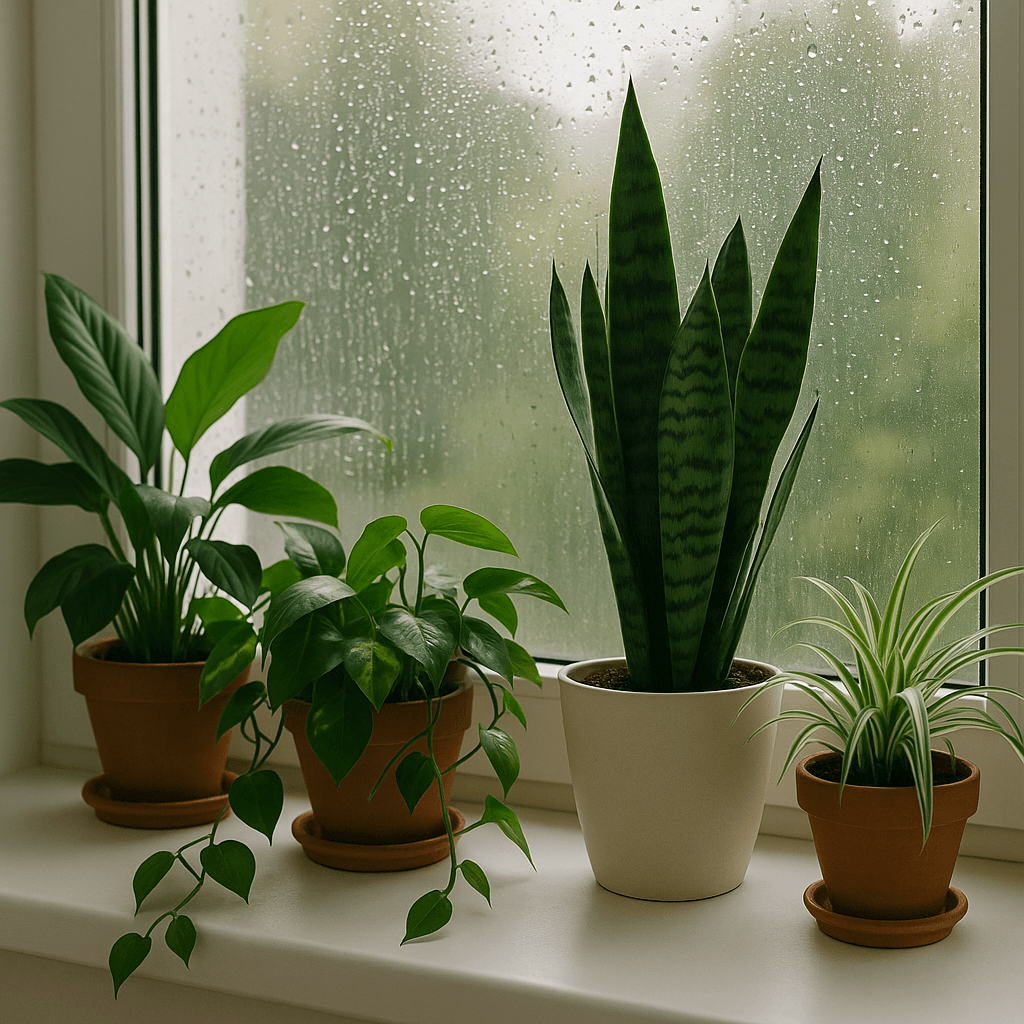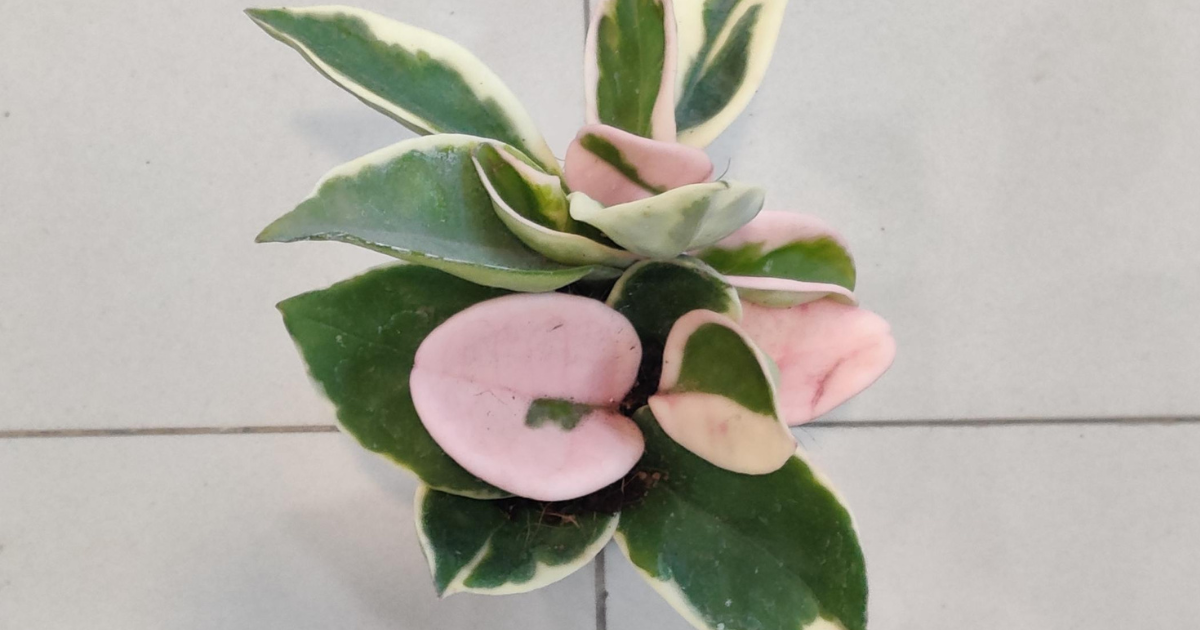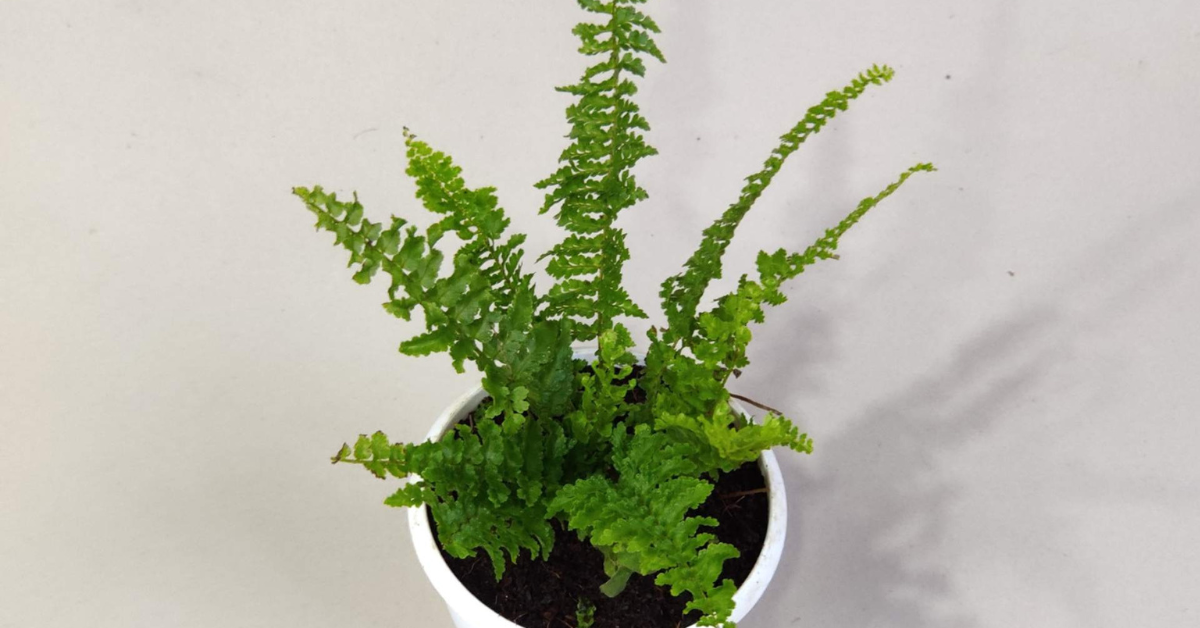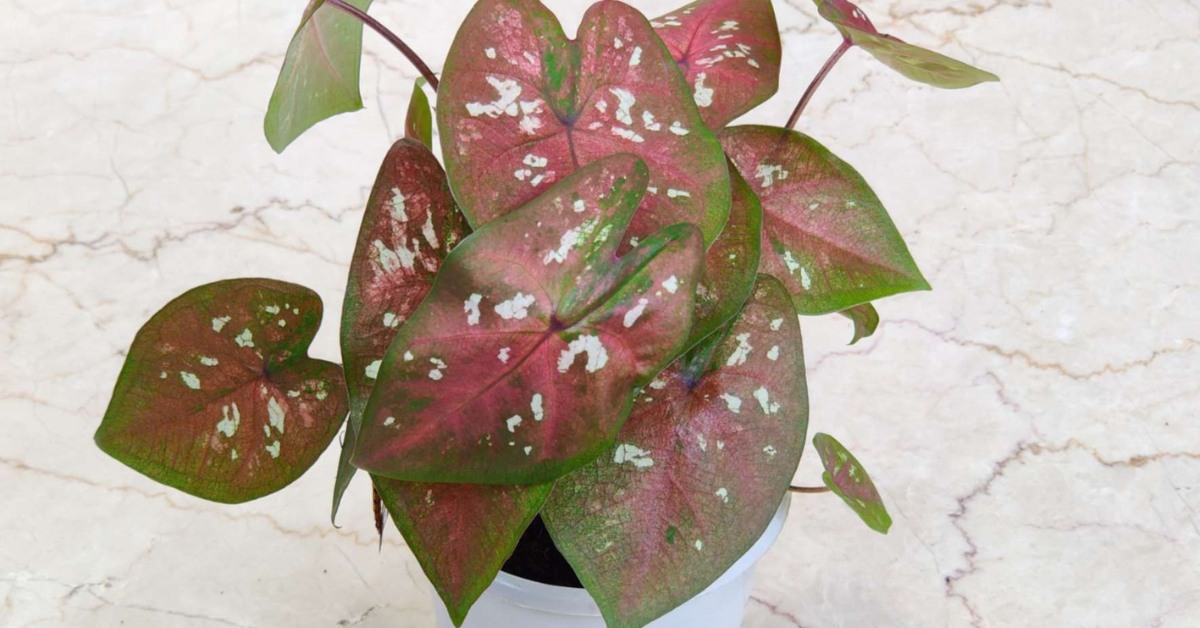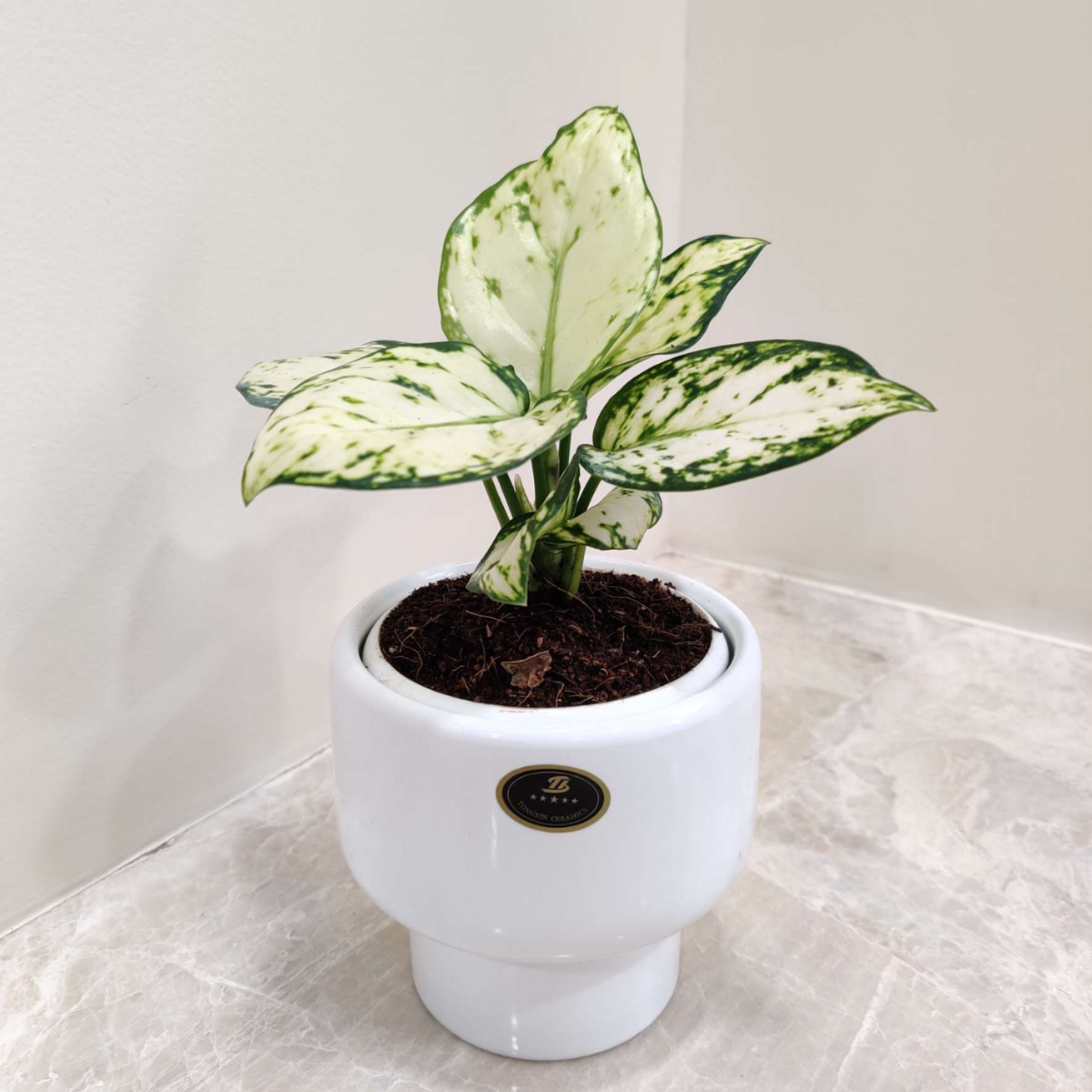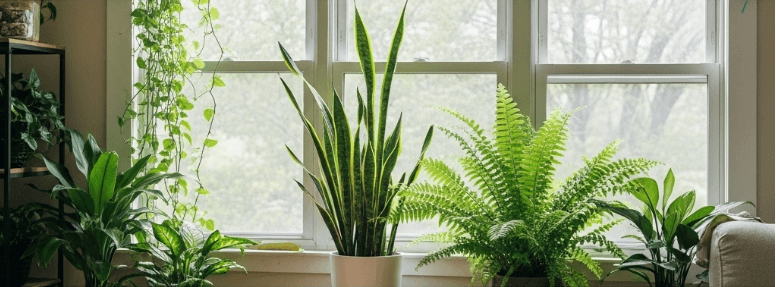
Rainy season is here — and so are the challenges it brings to your indoor plants.
If you’ve noticed yellowing leaves, soggy soil, or sudden fungus outbreaks, you’re not alone. Monsoon weather can be a blessing or a curse depending on how you care for your greens. In this guide, we’ll reveal the top indoor plants that thrive in humid weather, common mistakes plant lovers make during the rainy season, and expert-backed care tips to keep your indoor jungle happy and healthy this monsoon.
Plus, discover how to avoid root rot, the best watering schedule, and simple hacks to boost airflow and prevent pests — all tailored for Indian homes in 2025.
Benefits of Indoor Plants During the Monsoon Season
Indoor plants do more than beautify your space—they support your health and well-being, especially during the rainy season when we’re indoors more than usual. Here’s how:
- Purify the Air: Plants like snake plant and peace lily absorb indoor toxins and boost oxygen levels.
- Reduce Stress & Anxiety: Caring for plants lowers cortisol levels and promotes calm.
- Boost Focus & Productivity: Greenery near workspaces improves concentration and reduces fatigue.
- Balance Humidity: Plants naturally release moisture, helping relieve dry skin and respiratory discomfort.
- Support Mental Wellness: Daily plant care fosters a connection to nature, enhancing mood and emotional balance.
- Provide Therapeutic Benefits: Watching your plants grow brings joy, structure, and a sense of accomplishment.
- Enhance Aesthetics: They elevate your décor and create a soothing indoor environment.
Why Monsoon Plant Care Needs Special Attention Indoors
Monsoons dramatically shift indoor environments: humidity rises, airflow reduces, and sunlight becomes scarce. This affects indoor plants in many ways:
- Root rot and waterlogging due to poor drainage.
- Fungal growth on soil and leaves from trapped moisture.
- Increased pest infestations, especially mealybugs and fungus gnats.
- Stunted growth due to low light conditions.
This guide provides actionable strategies for indoor plant maintenance during rainy season, using organic, eco-friendly methods to keep your home green and healthy.

Top Monsoon Care Tips for Indoor Plants
1. Optimize Drainage to Prevent Root Rot
Indoor pots often lack sufficient drainage, leading to soggy soil and unhealthy roots. Here’s how to improve drainage:
- Choose well-draining potting mix with perlite, sand, or coco peat.
- Use terracotta pots — they’re porous and allow better airflow to roots.
- Elevate pots slightly with bricks or coasters to prevent blocked drainage holes.
- Avoid using trays that collect water — empty them regularly.
Tip: Add a thin layer of pebbles at the bottom of pots to avoid water stagnation.
2. Water Wisely with a Rainy Season Schedule
Watering mistakes are common during monsoons. Natural humidity and indirect rainwater may already be enough. Here’s your new routine:
- Skip fixed schedules — water only when soil feels dry 1–2 inches deep.
- Use the finger test or a moisture meter to check before watering.
- Water early in the morning to allow excess to evaporate during the day.
- Avoid watering during cloudy, humid days unless absolutely necessary.
3. Combat Fungal Growth Naturally
Increased humidity causes fungal spores to thrive. Look out for white or grey mold on soil or leaves.
Natural fungal prevention includes:
- Sprinkling cinnamon powder on the soil surface.
- Using neem oil spray every 10–14 days.
- Removing dead leaves promptly to prevent rot.
- Avoid overcrowding—space your pots apart to improve airflow.
Good ventilation is your best friend. Use fans or keep windows open to avoid stale, moist air.
4. Indoor Pest Control the Organic Way
Mealybugs, spider mites, aphids, and fungus gnats thrive indoors during monsoon. Manage pests naturally:
- Spray diluted neem oil or soap solution on leaves (top and bottom).
- Use garlic and chili spray to repel soft-bodied insects.
- Let soil dry out occasionally — fungus gnats hate dry soil.
- Introduce sticky traps near plants to catch flying pests.
Early detection is key. Inspect leaves weekly for signs of pests and act immediately.
5. Keep Indoor Plants Well Lit
Reduced sunlight is a major concern for sun-loving indoor plants like succulents and cacti. Even low-light plants suffer if left in dim corners.
Maximize light during monsoon:
- Place plants near south-facing windows for maximum brightness.
- Rotate pots every few days to ensure even light exposure.
- Use LED grow lights if natural light is too low.
- Clean window panes and leaves regularly for better light absorption.
Bonus: Reflect light by placing mirrors behind your plants to boost brightness.
6. Soil Health and Fertilizer Tips
Many indoor plants slow their growth during monsoon, so avoid over-fertilizing. Instead:
- Use organic compost or banana peel compost once a month.
- Add a tablespoon of vermicompost to each pot during a dry spell.
- Avoid chemical fertilizers — they may burn roots if the soil is moist.
Nutrient Tip: Mix banana peel powder with soil to improve potassium levels.
7. Prune and Groom Your Indoor Plants
Monsoon promotes rapid plant growth — which is great, but it can also result in leggy, untidy growth and poor airflow. Pruning is essential.
Here’s how to prune smartly:
- Trim dead, yellow, or infected leaves regularly.
- Shape ornamental plants for a neater appearance.
- Prune during dry intervals to prevent infections at the cut sites.
- Sanitize pruning tools before and after use.
Don’t forget to clean pots and repot if roots are overcrowded.
8. Propagate and Multiply Your Plant Collection
Monsoon is the ideal season to grow your plant family!
- Humidity helps root development in stem cuttings.
- Propagate money plants, syngonium, pothos, coleus, and snake plants easily.
- Keep cuttings in water jars near light sources; change water every 5–7 days.
- Plant rooted cuttings in coco peat-rich soil after 2–3 weeks.
Fun idea: Create a propagation station on your windowsill!
9. Avoid Soil Compaction and Algae
Compacted soil suffocates roots and slows growth. Here’s how to prevent it:
- Don’t press down the soil too much after watering.
- Avoid walking around large indoor pots or balcony containers.
- Add a thin layer of dry mulch (like coconut husk) to reduce compaction.
Watch out for green algae forming on wet soil — remove it and replace with dry topsoil.
10. Group Your Indoor Plants Smartly
Plants like to be with friends — sometimes. Grouping humidity-loving plants helps maintain consistent moisture but requires airflow.
Best practices:
- Group peace lily, syngonium, spider plant, and areca palm together.
- Keep succulents separate — they need drier air.
- Maintain 3–5 inches of space between pots for airflow.
- Use macrame hangers or tiered shelves for vertical space.
Best Indoor Plants for Rainy Season in India
These houseplants are naturally suited for high humidity, low light, and the unique indoor conditions that come with the monsoon season. They are low-maintenance, resilient, and perfect for plant lovers who want to keep their homes green and fresh during the rains.
- Peace Lily – Thrives in high humidity and acts as a powerful air purifier, making it ideal for damp indoor spaces during the monsoon.
- Money Plant (Pothos) – Grows rapidly in moist conditions, purifies the air, and adapts well to low light, making it a monsoon favorite.
- Snake Plant – Extremely drought-tolerant, needs minimal light, and is perfect for those who want a no-fuss plant during rainy days.
- Spider Plant – Known for its ability to absorb moisture and balance indoor humidity, it also filters airborne toxins.
- Aglaonema (Chinese Evergreen) – Displays stunning foliage, adapts well to indirect light and humid conditions, and is easy to care for.
- Areca Palm – Loves humidity, adds tropical vibes to your space, and helps increase air moisture naturally — perfect for monsoon air.
Indoor Plant Maintenance Calendar: Monsoon Edition
Weekly Tasks:
- Check for pests and treat naturally
- Prune yellowing or dead leaves
- Rotate pots for light balance
- Clean leaves and windows
Monthly Tasks:
- Apply organic fertilizer or compost
- Repot plants if needed
- Inspect drainage holes for blockage
- Refresh mulch or topsoil
Creative Hacks for Monsoon Indoor Gardening
Even the most experienced plant parents can face surprises during the monsoon. From unexpected mold to confused succulents, rainy season gardening comes with quirks — but these easy indoor plant care hacks for rainy season will help you maintain a healthy, happy indoor jungle.
1. Add Activated Charcoal to Potting Mix
Excessive monsoon humidity can turn your potting mix into a soggy mess. Mixing activated charcoal into your soil helps absorb surplus moisture, keeps the medium breathable, and prevents fungal growth and root rot. It’s especially effective for plants like ferns, calatheas, and ZZ plants.
Bonus: Activated charcoal also neutralizes odors and toxins in the soil — a win-win for plant health and air quality.
2. Use a Water Bowl Near Succulents
Succulents like echeveria and haworthia hate direct moisture on their leaves and roots. But during monsoon, dry air isn’t the problem — it’s too much humidity. Instead of misting them (which can cause rot), place a small bowl of water nearby to subtly raise humidity without wetting the plant.
This trick creates a microclimate ideal for humidity-sensitive plants without exposing them to fungal risks.
3. Create a DIY Rain Meter for Balcony Gardens
Watering your indoor or balcony plants without tracking rainfall can lead to overwatering. A fun and functional idea is to make your own rain gauge using a clear plastic bottle or measuring jar. Mark measurements and place it in an open spot on your balcony.
This DIY monsoon gardening trick helps you determine exactly how much water your plants have already received from rain — no more guesswork!
4. Repel Pests with Essential Oils
Skip the harsh chemicals — essential oils like peppermint, eucalyptus, or citronella are excellent natural pest repellents. Simply add a few drops to cotton balls or dilute with water in a spray bottle and place around your pots.
- Peppermint oil repels mealybugs and spider mites.
- Citronella keeps mosquitoes and fungus gnats away.
- Eucalyptus oil wards off aphids and whiteflies.
Caution: Always test a small amount on one leaf to avoid phytotoxicity before applying directly.
Conclusion: Celebrate Monsoon with a Flourishing Indoor Garden
The monsoon doesn’t have to be a season of struggle — it can be a time of abundance and transformation for your indoor plants. With the right care, organic methods, and a bit of attention, your home can turn into a lush, living sanctuary.
Use this guide as your seasonal handbook for monsoon indoor plant care, and watch your plants grow happier, greener, and more resilient. Remember — healthy plants don’t just survive the rain, they thrive in it!
Happy Monsoon Gardening!
FAQs
1. How do I keep my indoor plants from turning yellow in the monsoon?
Yellowing may result from overwatering or poor drainage. Reduce watering and check soil moisture regularly.
2. What’s the best way to get rid of fungus on indoor plant soil?
Sprinkle cinnamon powder, reduce watering, and improve airflow. For recurring issues, repot using fresh soil.
3. Are grow lights necessary during monsoon?
Yes, especially in rooms with poor sunlight. Use full-spectrum LED grow lights for 6–8 hours daily.
4. Should I mist indoor plants during the rainy season?
Avoid misting. The air is already humid, and excess moisture may promote fungal growth.
5. Can I use chemical fertilizers during monsoon?
It’s best to avoid them. Use natural compost or liquid seaweed solutions in minimal quantities.

